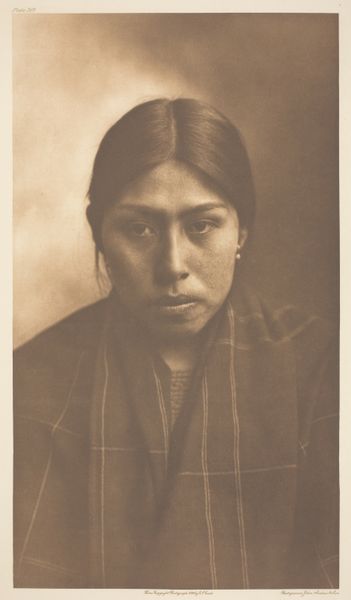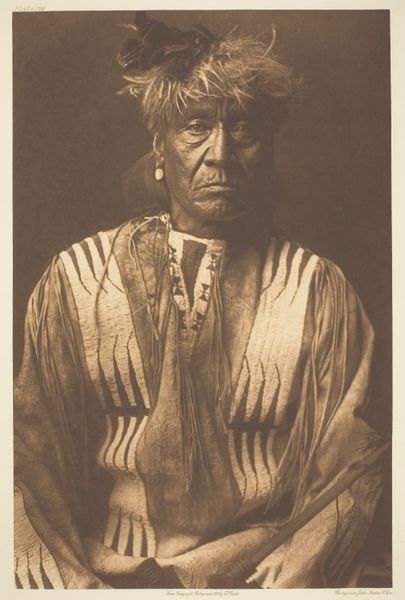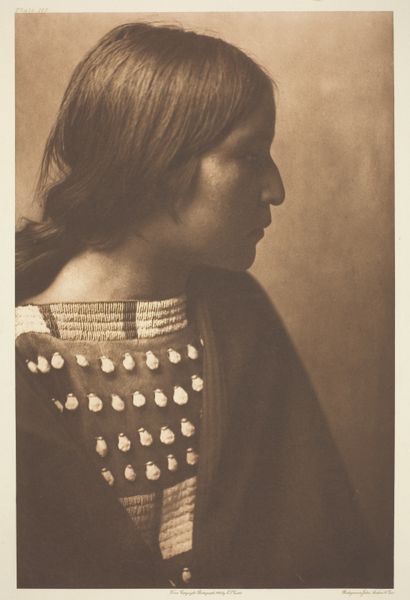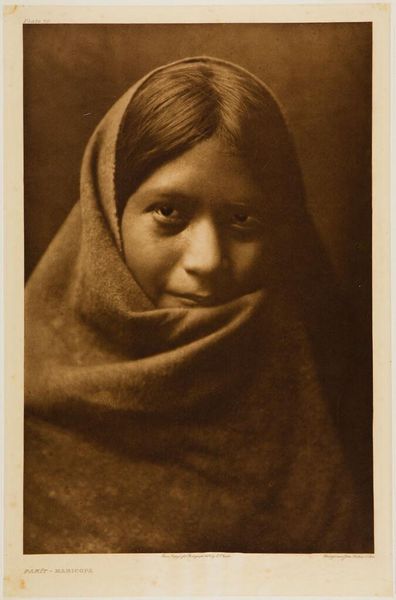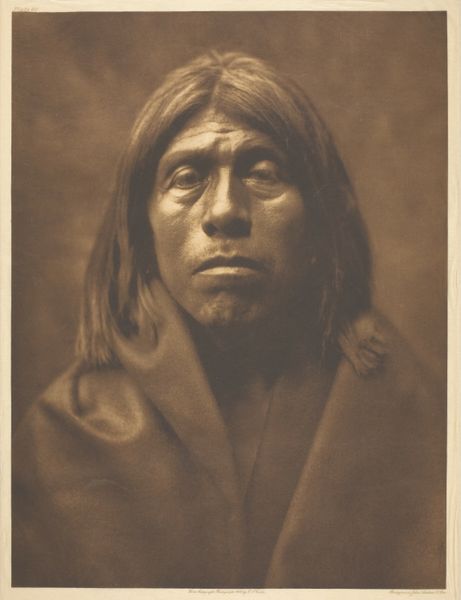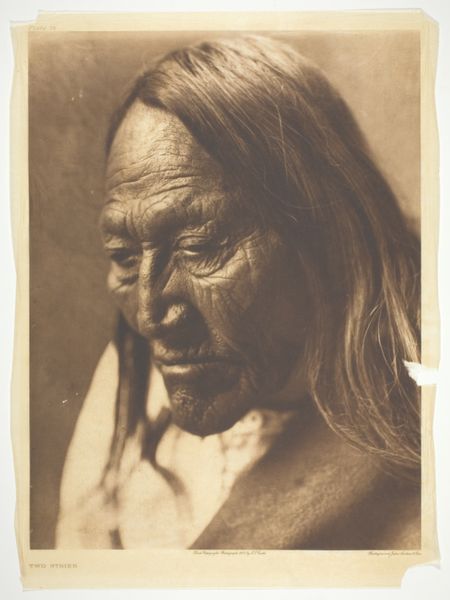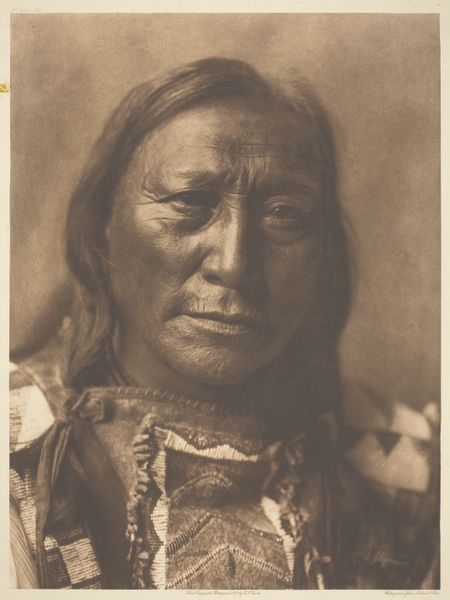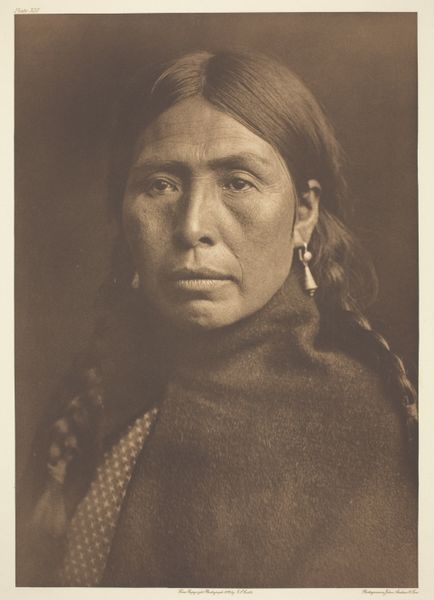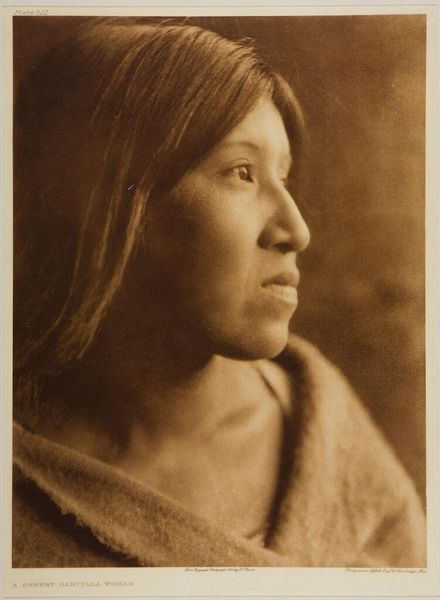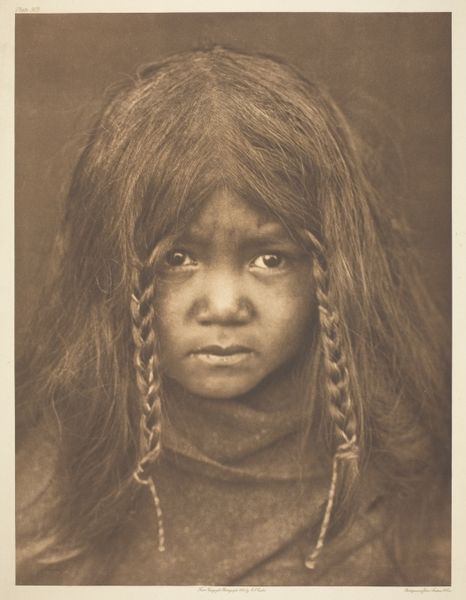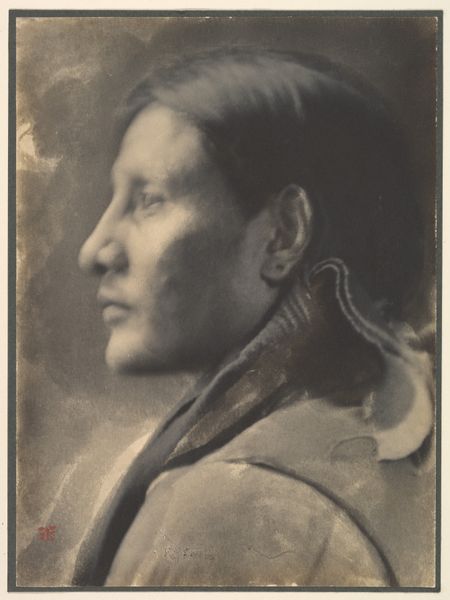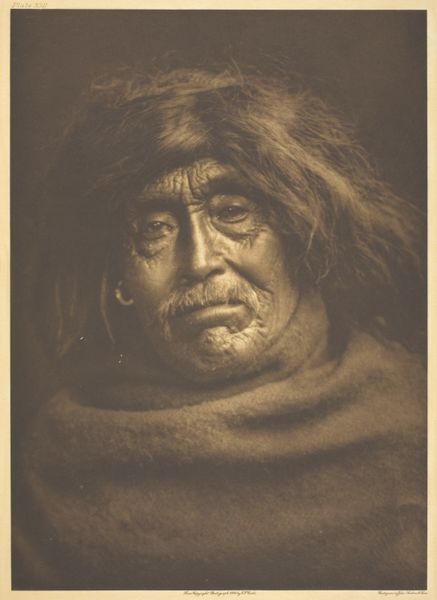
photography, gelatin-silver-print
#
portrait
#
print photography
#
pictorialism
#
photography
#
gelatin-silver-print
#
19th century
#
indigenous-americas
Dimensions: height 400 mm, width 300 mm, height 566 mm, width 460 mm
Copyright: Rijks Museum: Open Domain
Curator: So, here we have a gelatin silver print from 1907, entitled "Portret van Tonovigé," by Edward Sheriff Curtis. It's a captivating portrait, wouldn't you agree? Editor: Absolutely. I'm immediately drawn to her eyes – they're pools of quiet strength. And the light...it feels both gentle and revealing, like a whispered secret. Curator: Curtis, through his photographic work with indigenous people of the Americas, certainly sought to capture a specific moment in time and a way of life that was rapidly changing. The use of gelatin silver provides a lovely tonal range. Editor: It does lend the image this dreamlike quality. It makes me wonder, what was Tonovigé thinking? What stories did she hold within her, beyond the image and outside of Curtis’s intentions? Was Curtis presenting facts or fictions? Curator: That is a valid point, and part of the complex legacy surrounding Curtis's work. While he aimed to document and even "preserve" Indigenous cultures, it has been criticized for romanticizing or idealizing the sitters, thus obscuring true realities. These photos served specific audiences at that time. Editor: Yes, and sometimes I feel caught in that gaze, as if being asked, "Who are you to be looking at me this way?" It pushes against that flat presentation, and urges the viewer to engage with her humanity, rather than just an ‘artifact’. The fringed hair almost conceals and at the same time accentuates, no? Curator: Definitely, and framing like this adds to a sense of intimacy, though an intimacy tempered by historical context and a certain aesthetic distance characteristic of pictorialism. Editor: Pictorialism is just too pretty sometimes though, don't you think? It takes you somewhere you may never actually reach. I have been guilty of taking similar pictures myself. I get wanting to frame and stage it nicely, make sure the composition is good…but is it…true? And should ‘truth’ be a consideration in art, especially portraits? It’s complicated… Curator: Well, I find thinking about how the image has been mediated through different levels of historical and societal change brings a sense of appreciation to these moments. I think its complex legacy is worthwhile exploring! Editor: Ultimately, it makes me reflect on photography’s role—its ability to preserve, but also potentially distort, depending on how the photographer situates themselves and their subject in relation to power. It makes you feel, and want to think at the same time, which is pretty good for a photo.
Comments
No comments
Be the first to comment and join the conversation on the ultimate creative platform.

